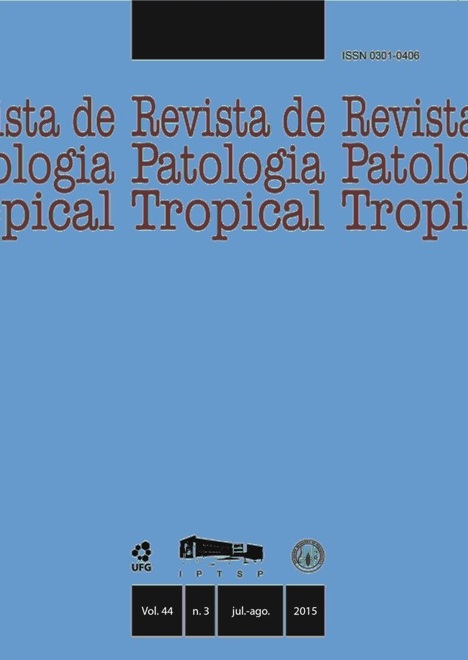PREVALENCE OF INTESTINAL PARASITES AND SOCIO-ECONOMIC ANALYSIS OF STUDENTS IN FLORES DA CUNHA, RS, BRAZI
DOI:
https://doi.org/10.5216/rpt.v44i3.38018Keywords:
Parasites, worms, students, basic sanitation, prevalence.Abstract
Worms are still a serious public health issue in the country, being easily transmitted in school-age children because of their immature immune system and the precarious maintenance of a healthy personal hygiene. Thus, the objective of this study was to evaluate the prevalence of parasites and the socioeconomic profile of the school population of Flores da Cunha, RS. Fecal samples of students were collected for further analysis by the means of spontaneous sedimentation, and questionnaires were applied on the matter of parasites and socioeconomic status to those in charge at the school. Of the 341 samples evaluated, 10.0% were positive, revealing the presence of 55.9% of cysts of Endolimax nana, 26.5% of Entamoeba coli, 5.9% of Iodamoeba butschlii, 2.9% of Ascaris lumbricoides, 2.9% of Giardia lamblia and 5.9% of individuals with multiple parasitosis (Entamoeba coli and Endolimax nana). Most of the school’s people responsible for the matter emphasized that they sought information about worms from health professionals (49.7%), even though 49.9% of the personnel still think the information given is not enough. Regarding the city’s sanitation facilities, 57.2% believe that they have collection and treatment of sewage, 67.2% have some rain storage system, thus preventing accumulations in the area nearby, and 47.2% perform some kind of pest control. Around 79% of the students had never had stool tests or been diagnosed with parasites, and yet 85.9% claimed to have used antiparasitic drugs. The low prevalence of parasites found in this study is explained by the constant use of antiparasitics. Thus, it is important to improve the dissemination of guidelines on the prevention of parasites and the danger of self-medication.Downloads
Downloads
Published
How to Cite
Issue
Section
License
The manuscript submission must be accompanied by a letter signed by all authors stating the full name and email address, confirming that the material has not been published or is under consideration for publication elsewhere, and agreeing to transfer copyright in all media and formats for Journal of Tropical Pathology. The authors will not be paid for published articles. They are solely responsible for the content of those articles, even if the Editor holds the right to adjust them to the norms of the journal.
The reviewers will not be paid for the peer review process.

